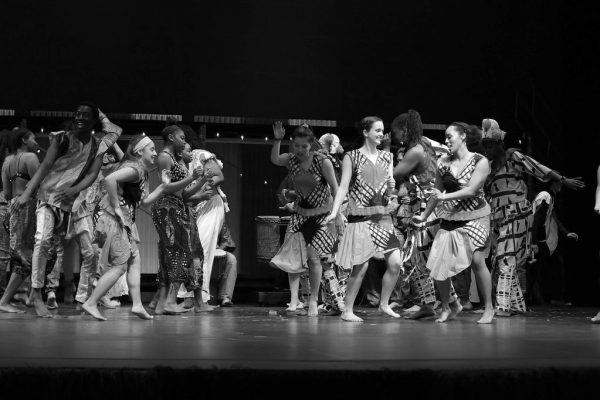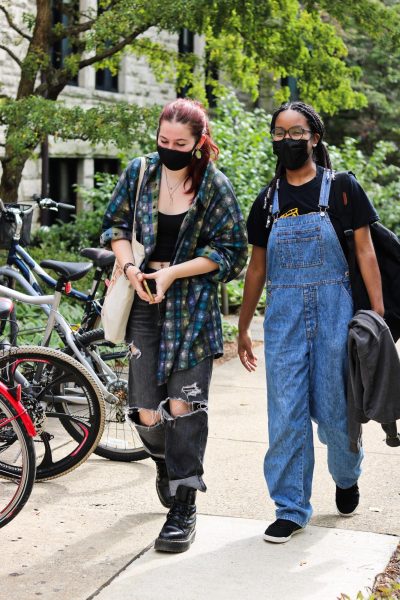Whiteness of Student Publications Threatens Integrity
When’s the last time you saw a Nazi at the grocery store?
If not yesterday, maybe you saw a picture of one in The New York Times’ profile of Tony Hovater — bonafide and self-avowed white nationalist. In their article “A Voice of Hate in America’s Heartland,” originally titled “In America’s Heartland, Nazi Sympathizer Next Door,” the Times willingly gave a white supremacist an uncontested platform for his unabashedly racist views.
When faced with criticism over the style of reporting and lapses made in nearly all respects, the Times defended their coverage of bigoted Hovater in “Readers Accuse Us of Normalizing Nazi Sympathizer, We Respond.” They responded, and responded poorly.
“Our reporter and his editors agonized over the tone and content of the article,” Times National Editor Marc Lacey wrote in a statement. “The point of the story was not to normalize anything but to describe the degree to which hate and extremism have become far more normal in American life than many of us want to think.”
Describing the degree to which hate exists in everyday life by caricaturing it as “your friendly neighborhood Nazi” does nothing to advance the cause of justice or influence public opinion in an unbiased way. It allows the bias of sectarianism and segregation to freely enter the American subconscious without opposition, priming us to respond to these irrational and abhorrent ideologies not with alarm, but with dereliction and indifference.
This approach to journalism can lead to many conversations, most of which revolve around this simple fact: We need more people of color in newsrooms and in editorial positions, framing the landscape of public intellectualism.
Someone with a sound understanding of white supremacist systems and the omnipresence of covert racism throughout American society would never have let a piece like this find its way through an entire production cycle and to print. Who is better primed to frame conversations on white supremacy than those who routinely experience its pressures?
Frankly, I don’t need to read about the Nazi in Target — we already see the white supremacist in Walmart telling anyone who’s brown and speaks Spanish to “go back to your country” on Twitter. The Oberlin community doesn’t need a soft profile of the bigot arguing that affirmative action is unfair to white people — I went to high school with that person; he proudly proclaimed admission to the University of Michigan but failed to mention that it was achieved through his father’s legacy status.
The American public certainly could go without another “objective” piece on the “underrepresented conservative contingency on campus.” I hear those people complain as they march in “pro-life” parades while conveniently stepping over Black bodies dying at the hands of the state.
The world will survive without another racist couple using the guise of patriotism to thinly veil their racist Facebook rants on everything wrong with Colin Kaepernick. Those who ignore these instances actualize the words of Dr. Martin Luther King Jr.: There is nothing more dangerous than sincere ignorance and conscientious stupidity.
Top national media outlets suffer from a dire need to diversify content production, editorial and production operations, and executive leadership — but they are not alone. The Times’ story prompted me to examine the campus news publications right here in Oberlin, which are also ill from a familiar disease of compositional homogeneity in editorial leadership.
Take The Oberlin Review, for example. Of the 12 students making direct decisions about what content the paper prints, only two identify as persons of color. That’s pathetic. Out of a student body of over 2,800, the publication could only garner two students to fill those roles and challenge the shield of whiteness that coats the publication at its core.
The Grape offends as well — perhaps even more aggravatingly, as the publication has sought to be an “alternative magazine” that often calls for attention to the marginalized. Of the 17 people on the Grape’s entire staff, only two identify as persons of color. They might as well update their tagline to read: “where [white] art, politics, pop culture, student life, activism and skepticism collide.”
Dream with me. What would Oberlin’s stories look like if the team writing them actually reflected the identities of those it seeks to narrate? Maybe the Review would’ve covered this year’s “Kuumba Week” — a lively and long-standing tradition celebrating the life and spirit of Africana life on campus. Or maybe the Grape would have mentioned the Muslim Students Association’s banquet earlier this fall. Who knows? Maybe the Arts & Culture sections of both campus publications would cover a Soul Session, an event near and dear to many students of color at Oberlin that has survived for decades.
The bottom line is that until publications as local as The Oberlin Review to those as global as The New York Times achieve a healthy, robust compositional diversity amongst their editorial staffs, these publications will continue to problematically promote some narratives over others. Important stories of diverse perspectives that enrich our local and global communities will continue to go untold. The system that allows Hovater’s views to be loudly proclaimed in the city center or quietly in the halls of Congress is the same system that keeps people of color out of editorial boards and newsrooms in the basement of Burton.
I hear the Review is hiring three new section editors. I wonder if any of those positions will go to someone who brings them closer to accurately representing our campus through compositional diversity. Maybe they will, but they probably won’t.




